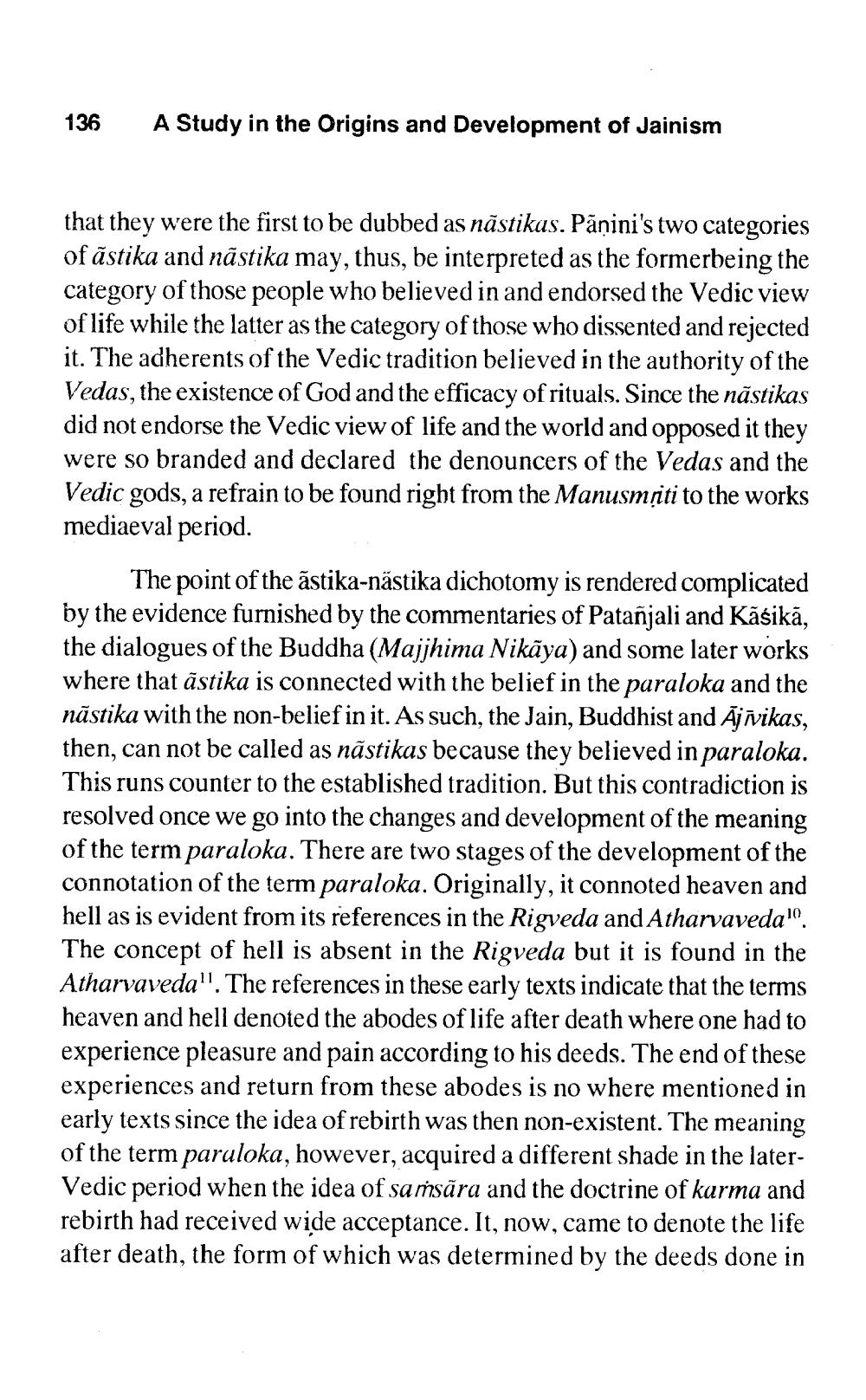________________
136
A Study in the Origins and Development of Jainism
that they were the first to be dubbed as nāstikas. Pāṇini's two categories of astika and nastika may, thus, be interpreted as the formerbeing the category of those people who believed in and endorsed the Vedic view of life while the latter as the category of those who dissented and rejected it. The adherents of the Vedic tradition believed in the authority of the Vedas, the existence of God and the efficacy of rituals. Since the nastikas did not endorse the Vedic view of life and the world and opposed it they were so branded and declared the denouncers of the Vedas and the Vedic gods, a refrain to be found right from the Manusmriti to the works mediaeval period.
The point of the ãstika-nästika dichotomy is rendered complicated by the evidence furnished by the commentaries of Patanjali and Kāśikā, the dialogues of the Buddha (Majjhima Nikaya) and some later works where that astika is connected with the belief in the paraloka and the nastika with the non-belief in it. As such, the Jain, Buddhist and Ajīvikas, then, can not be called as nãstikas because they believed in paraloka. This runs counter to the established tradition. But this contradiction is resolved once we go into the changes and development of the meaning of the term paraloka. There are two stages of the development of the connotation of the term paraloka. Originally, it connoted heaven and hell as is evident from its references in the Rigveda and Atharvaveda10. The concept of hell is absent in the Rigveda but it is found in the Atharvaveda". The references in these early texts indicate that the terms heaven and hell denoted the abodes of life after death where one had to experience pleasure and pain according to his deeds. The end of these experiences and return from these abodes is no where mentioned in early texts since the idea of rebirth was then non-existent. The meaning of the term paraloka, however, acquired a different shade in the laterVedic period when the idea of samsara and the doctrine of karma and rebirth had received wide acceptance. It, now, came to denote the life after death, the form of which was determined by the deeds done in




